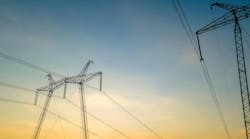Compared to traditional grid scale generation resources, distributed energy resources (DER) are called upon more often, more intermittently, and at multiple points of system interconnection with transmission systems – often creating significant challenges to power stability. To address this, utilities are increasingly deploying voltage control and compensation equipment including shunt capacitors and reactors to the lines. And they are switching them more often. The impact is particularly striking in the case of shunt reactors, most commonly used for preventing damaging, high system voltages on lightly loaded lines.
One utility, with a newly integrated wind farm, installed shunt reactors at either end of the transmission line to control voltage swings that were anticipated as the load on the line changed. Soon, however, the impact of switching the reactors in and out of the system, on daily basis, led to a string of failures of commonly used switching devices. It’s an all too common scenario, since traditional devices used for reactor switching, such as circuit breakers and circuit switchers, are designed primarily as protective devices to interrupt high fault currents and are not ideally suited for specific applications.
While traditional switching devices effectively interrupt the small inductive load currents of the reactor, interruption is almost too easy and results in current chopping (interruption at a forced current zero). This presents a unique challenge to the interrupter as the reactors inductance causes a rapid rate of rise of voltage across the opening contacts. This rapidly increasing voltage (TRV) results in a current re-ignition because the device’s contacts are still too close to each other. This re-ignition damages the interrupter and over time will lead to premature failure often in less than 500 operations. In addition, the high TRV puts significant stress on the reactor often leading to pre-mature failure.
The unique challenge of switching a shunt reactor requires a completely new approach to the interrupter design, one specifically tailored to the application. The most important function of the interrupter design is to minimize or prevent the high TRV during interruption, preventing potential damaging re-ignitions. While improved control algorithms can be added to traditional switching devices to help reduce the occurrence of these damaging re-ignitions, an improved interrupter design that does not depend on precise timing of mechanical systems or learning algorithms is inherently more reliable.
Looking forward, with the increasing use of renewable generation, the use of shunt reactor banks will only increase. Use of traditional switching devices has exposed weaknesses in device designs that can impact system reliability leading to excessive outages. To adapt, utilities should review shunt reactor switching practices and consider updating them to include more reliable, DER-ready switching devices. Doing so can bring significant improvements in product life and systems.
Learn more in the paper: Interrupter Technology for Switching Shunt Reactors Evolves as the Frequency of Switching Reveals Weaknesses in Traditional Design
Special purpose reactor switchers…
- Enhance reliability :Interrupter designed to withstand reignition without damage or life reduction
- Simplify Operations: Eliminates need for synchronous opening controller and 2 mechanisms
- Enhance Safety: Mitigating turn to turn voltage transients on reactor
- Reduce current chopping
- Improves Environmental Impact: Less mass of SF6 than Dead tank or GIS designs
- Fit existing footprint: Compact design
Sponsored by:



